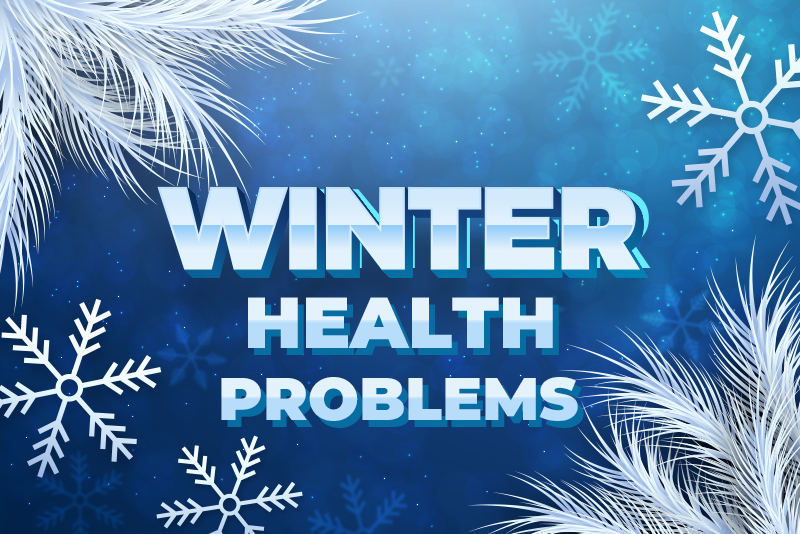This is an update to our blog, “Four Common Winter Ailments and Their ICD-10 Codes“.
Along with the joyful holidays, come seasonal flu, colds and other ailments. Winter is quite an exciting time for get-togethers, Thanksgiving, holiday parties and family dinners. However, health issues that are triggered by the cold weather are many. Such diseases make emergency rooms and hospitals quite busy in the year end. Practices can rely on medical billing outsourcing companies to submit clean claims and get reimbursed on-time.
Seasonal Diseases in Winter and Their Related ICD-10 Codes
Take a look at some of the most common seasonal diseases in winter and their related ICD-10 codes.
Common cold
- J00 Acute nasopharyngitis [common cold]
Flu
- J09 Influenza due to certain identified influenza viruses
- J09.X Influenza due to identified novel influenza A virus
- J09.X1 …… with pneumonia
- J09.X2 …… with other respiratory manifestations
- J09.X3 …… with gastrointestinal manifestations
- J09.X9 …… with other manifestations
- J09.X Influenza due to identified novel influenza A virus
- J10 Influenza due to other identified influenza virus
- J10.0 Influenza due to other identified influenza virus with pneumonia
- J11 Influenza due to unidentified influenza virus
- J11.0 Influenza due to unidentified influenza virus with pneumonia
- J11.1 Influenza due to unidentified influenza virus with other respiratory manifestations
- J11.2 Influenza due to unidentified influenza virus with gastrointestinal manifestations
- J11.8 Influenza due to unidentified influenza virus with other manifestations
Sore throat
- R07.0 Pain in throat
Strep throat
- J02 Acute pharyngitis
- J02.0 Streptococcal pharyngitis
- J02.8 Acute pharyngitis due to other specified organisms
- J02.9 Acute pharyngitis, unspecified
Acute and chronic bronchitis
- J20 Acute bronchitis
- J20.0 Acute bronchitis due to Mycoplasma pneumoniae
- J20.1 Acute bronchitis due to Hemophilus influenzae
- J20.2 Acute bronchitis due to streptococcus
- J20.3 Acute bronchitis due to coxsackievirus
- J20.4 Acute bronchitis due to parainfluenza virus
- J20.5 Acute bronchitis due to respiratory syncytial virus
- J20.6 Acute bronchitis due to rhinovirus
- J20.7 Acute bronchitis due to echovirus
- J20.8 Acute bronchitis due to other specified organisms
- J20.9 Acute bronchitis, unspecified
- J40 Bronchitis, not specified as acute or chronic
- J41 Simple and mucopurulent chronic bronchitis
- J41.0 Simple chronic bronchitis
- J41.1 Mucopurulent chronic bronchitis
- J41.8 Mixed simple and mucopurulent chronic bronchitis
- J42 Unspecified chronic bronchitis
Pneumonia
- J12 Viral pneumonia, not elsewhere classified
- J13 Pneumonia due to Streptococcus pneumoniae
- J14 Pneumonia due to Hemophilus influenzae
- J15 Bacterial pneumonia, not elsewhere classified
- J16 Pneumonia due to other infectious organisms, not elsewhere classified
- J16.0 Chlamydial pneumonia
- J16.8 Pneumonia due to other specified infectious organisms
- J17 Pneumonia in diseases classified elsewhere
- J18 Pneumonia, unspecified organism
Whooping cough
- A37 Whooping cough
- A37.0 Whooping cough due to Bordetella pertussis
- A37.00 …… without pneumonia
- A37.01 …… with pneumonia
- A37.1 Whooping cough due to Bordetella parapertussis
- A37.10 …… without pneumonia
- A37.11 …… with pneumonia
- A37.8 Whooping cough due to other Bordetella species
- A37.80 …… without pneumonia
- A37.81 …… with pneumonia
- A37.9 Whooping cough, unspecified species
- A37.90 …… without pneumonia
- A37.91 …… with pneumonia
- A37.0 Whooping cough due to Bordetella pertussis
Asthma attacks
- J45 Asthma
- J45.2 Mild intermittent asthma
- J45.3 Mild persistent asthma
- J45.4 Moderate persistent asthma
- J45.5 Severe persistent asthma
- J45.9 Other and unspecified asthma
Seasonal depression
- F33 Major depressive disorder, recurrent
- F33.0 Major depressive disorder, recurrent, mild
- F33.1 Major depressive disorder, recurrent, moderate
- F33.2 Major depressive disorder, recurrent severe without psychotic features
- F33.3 Major depressive disorder, recurrent, severe with psychotic symptoms
- F33.4 Major depressive disorder, recurrent, in remission
- F33.8 Other recurrent depressive disorders
- F33.9 Major depressive disorder, recurrent, unspecified
- F34 Persistent mood [affective] disorders
Heart attacks
- I21.9 Acute myocardial infarction, unspecified
- I21.A Other type of myocardial infarction
- I21.A1 Myocardial infarction type 2
- I21.A9 Other myocardial infarction type
- I21.A Other type of myocardial infarction
Joint pain
- M25.5 Pain in joint
- M25.50 Pain in unspecified joint
Dry-itchy skin
- L29 Pruritus
- L29.0 Pruritus ani
- L29.1 Pruritus scroti
- L29.2 Pruritus vulvae
- L29.3 Anogenital pruritus, unspecified
- L29.8 Other pruritus
- L29.9 Pruritus, unspecified
Acute ear infection
- H66.9 Otitis media, unspecified
- H66.90 …… unspecified ear
- H66.91 …… right ear
- H66.92 …… left ear
- H66.93 …… bilateral
Tips to Stay Safe from Winter Illnesses
- Stay hydrated
- Include Vitamin C foods in your diet
- Wash your hands frequently
- Maintain hygiene
- Wear the right clothing to keep oneself warm
- Do exercises regularly
- Get a good amount of sleep
- Practice food safety
Sedentary lifestyle, lack of exercise, poor diet, and increase in fat accumulation in the body can also cause such illnesses. Providers diagnosing and treating any such winter health issues can consider professional medical coding services to report the treatments provided using the right diagnosis and procedure codes, on the medical claims submitted to insurers.




